Flying with young children can be an overwhelming feat for many families. We lay out everything you need to know before flying with a baby
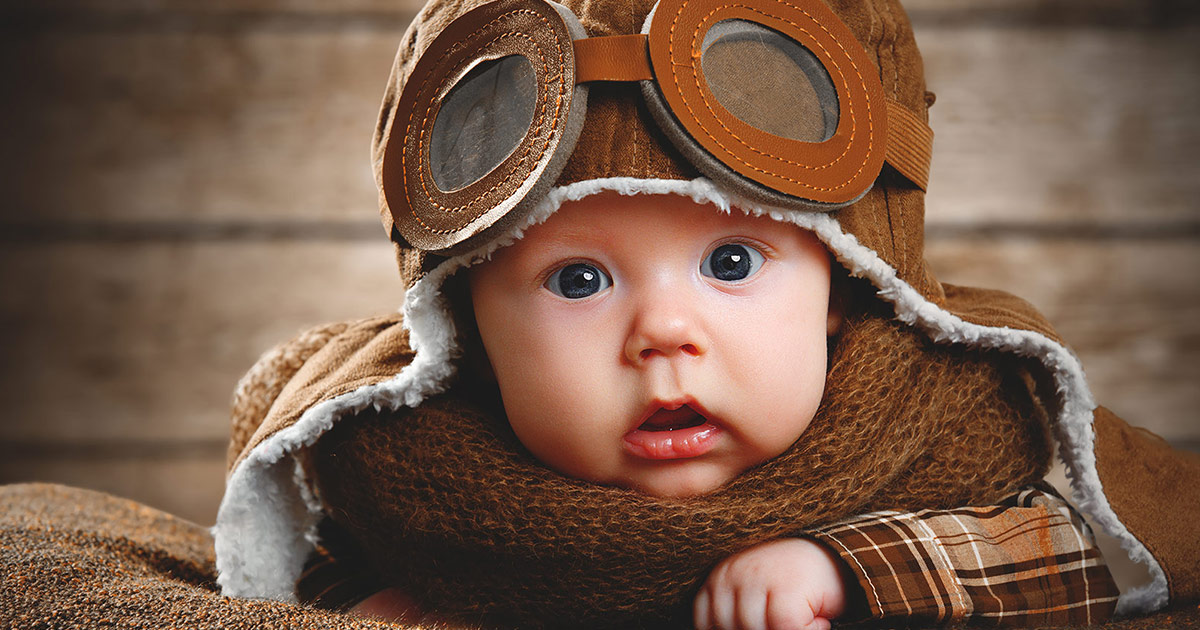
The fear of flying with a baby is one of the biggest reasons that families with youngsters choose to stay home rather than to travel abroad. The thought of air travel with kids can be intimidating. Young parents might be concerned about being “that parent with the screaming child”, worried about losing their child in a busy airport, dealing with security while wrestling with a toddler and a diaper bag, or any number of other very valid concerns.
It’s true that air travel with a baby requires more preparation than going by yourself or with your partner. But it doesn’t need to be a nightmare scenario. In fact, in my personal opinion, flying with a baby is the easiest age to travel with kids. At that age, access to food is pretty straightforward, babies sleep a good portion of the day, and they are light and very easy to carry.
As babies get older, things actually get more complicated.
I’ve traveled to over 26 countries across five continents with my children. More than a dozen of those were with children under two years of age. This experience has led me to become somewhat of an expert on flying with young children. I’ve been interviewed about travel experiences on TV, radio, and podcasts that have been shared around the world.
I even run a Family Travel Support Group on Facebook where thousands of parents and caregivers share tips and tricks for traveling with children. Or you can check out my guide to getting started with family travel here.
This article is for parents who are new to family travel. Those who have either never flown with a baby, or have taken a few trips, but have just never felt comfortable flying with a baby, toddler, or young child. I’ll lay out everything that you need to know, what to bring, what not to bring, and how to ensure that your travel experience is as relaxing, organized, and trouble-free as possible.
Planning Your First Flight With A Baby
Table of Contents
If you’re planning on booking your first flight with a baby, there are a few industry terms that you might hear being thrown around that can, first of all, help you plan and second of all, save you some money.
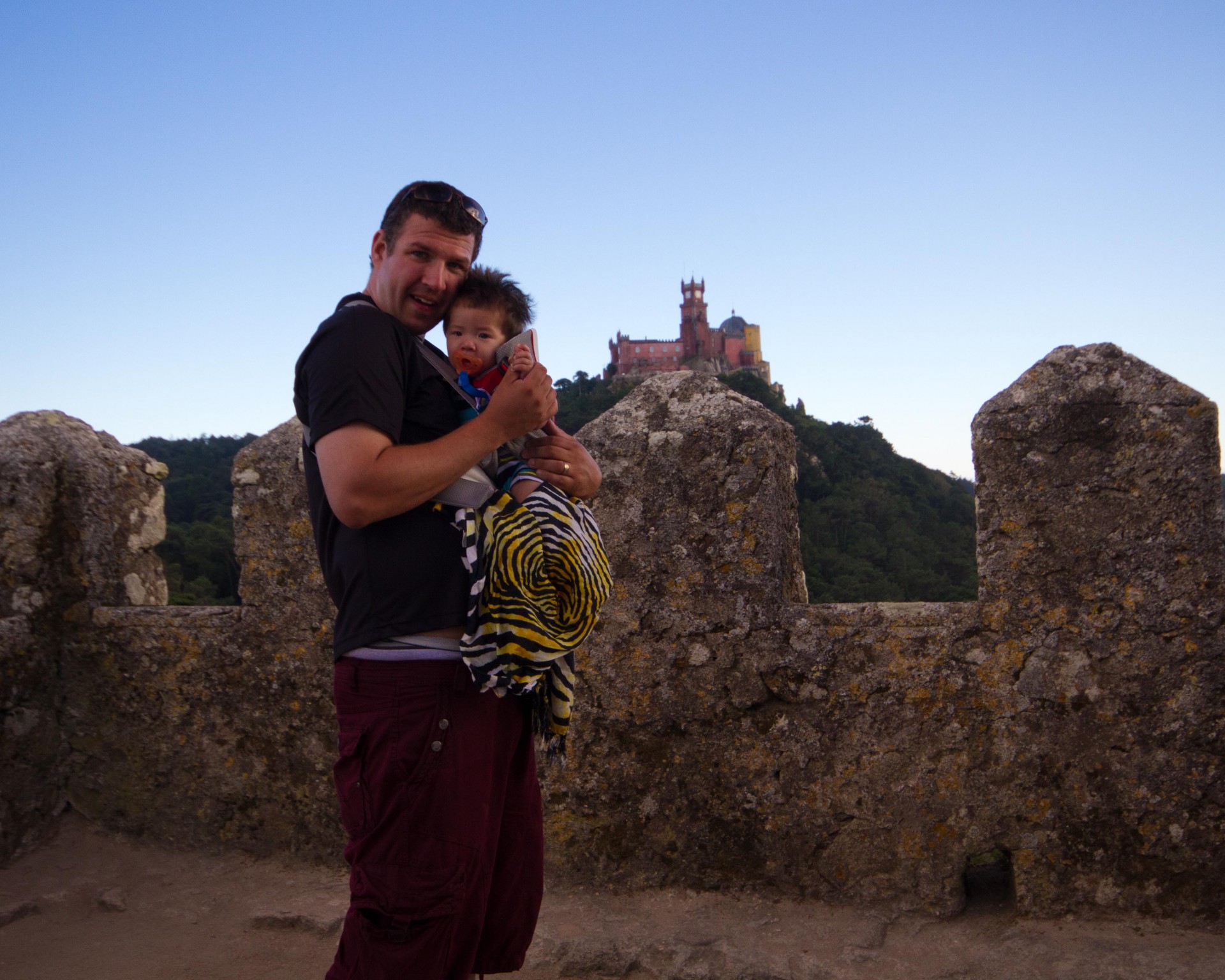
How Old Does A Child Need To Be To Fly?
Pediatricians generally agree that it is safe to travel with a baby after 4-6 weeks of age. But this number is really a guide and not a rule. The truth is that most airlines have no issues with babies traveling as young as six days old.
Individual airlines might have their own rules when it comes to the minimum age for babies to fly, so if you have a child younger than a few weeks old, I’d recommend reaching out to the airline to confirm their policies so that you aren’t met with frustration. Some airlines might require a doctor’s note for young babies, especially those between two days to two weeks of age.
What Is A Lap Child?
One of the most important aspects of flying with an infant is the term “lap child.”
When flying with children under two years of age, many airlines offer adults the option of purchasing a lap child ticket.
A lap child ticket often allows you to book the child at minimal or no additional charge (depending on the airline). To save on costs, we always chose to carry our children as lap children during our flights, including our 15-hour flight from Toronto to Jordan.
Having a lap child ticket means that you will require an extra seatbelt (supplied by the airline) for international flights and you must hold your child, with the seatbelt on when the seatbelt indicator is on in the plane.
Because lap children have a different ticket than others on the flight, most automatic ticket booths will not allow you to get your child’s ticket from them. Instead, you will need to go directly to the counter and speak with an attendant.
The cost for a lap child ticket depends upon what airline you and your baby are traveling upon. One example is Air Canada. With Air Canada, if you are flying within Canada, any child that is younger than 2 years of age can sit on their parent’s lap at no additional charge.
Once your child is 2 years old and older, you are required to purchase a seat for them at the cost of an adult fare.
Flying internationally is a little bit different as well. When flying internationally, a child younger than 2 years old can also sit on your lap but 10% of an adult fare would be charged. For some airlines, a tax fee is required. So it’s always best to check with the airline to confirm costs before you book your international family vacation.
Do Children Need Special Seats Or Harnesses To Travel?
For adults who choose to book a separate seat for their baby while flying, there are some additional things to consider. Babies can’t hold themselves up, attach their seatbelts, or sit properly in standard airline seats.
While older toddlers might get by with the FAA (Federal Aviation Administration) approved, CARES harness (a device that helps keep small children safe in their seats). The CARES harness is a car seat substitute consisting of an additional belt with a shoulder harness. The harness goes around and behind the seat ensuring that your child’s upper body is secure.
Some airlines allow parents of young infants to book a bunker bassinet, which is a small cot or bed that attaches to the wall of an airplane’s bunker divider. This can be a huge score if your airline offers them, but you need to book them very early and often need to contact the airline directly to ensure that it is an option.
Alternatively, if you want your baby to have their own seat on an airplane, bring a car seat. A car seat allows them to have a comfortable place to rest, while still being safely secured to the seat in the event of turbulence.
How Many Babies Can An Adult Fly With?
Something to keep in mind is that there must be a ratio of 1:1 between babies and adults while flying. Also, when booking your seats, children are not allowed in the exit row of an airplane.
Each airline has its own rules and policies when it comes to traveling with a baby. When choosing which airline to travel with, it is beneficial to go on their website to see what their rules and policies are. Knowing their rules and policies ensure that the uh-oh moment doesn’t happen at the beginning of your trip.
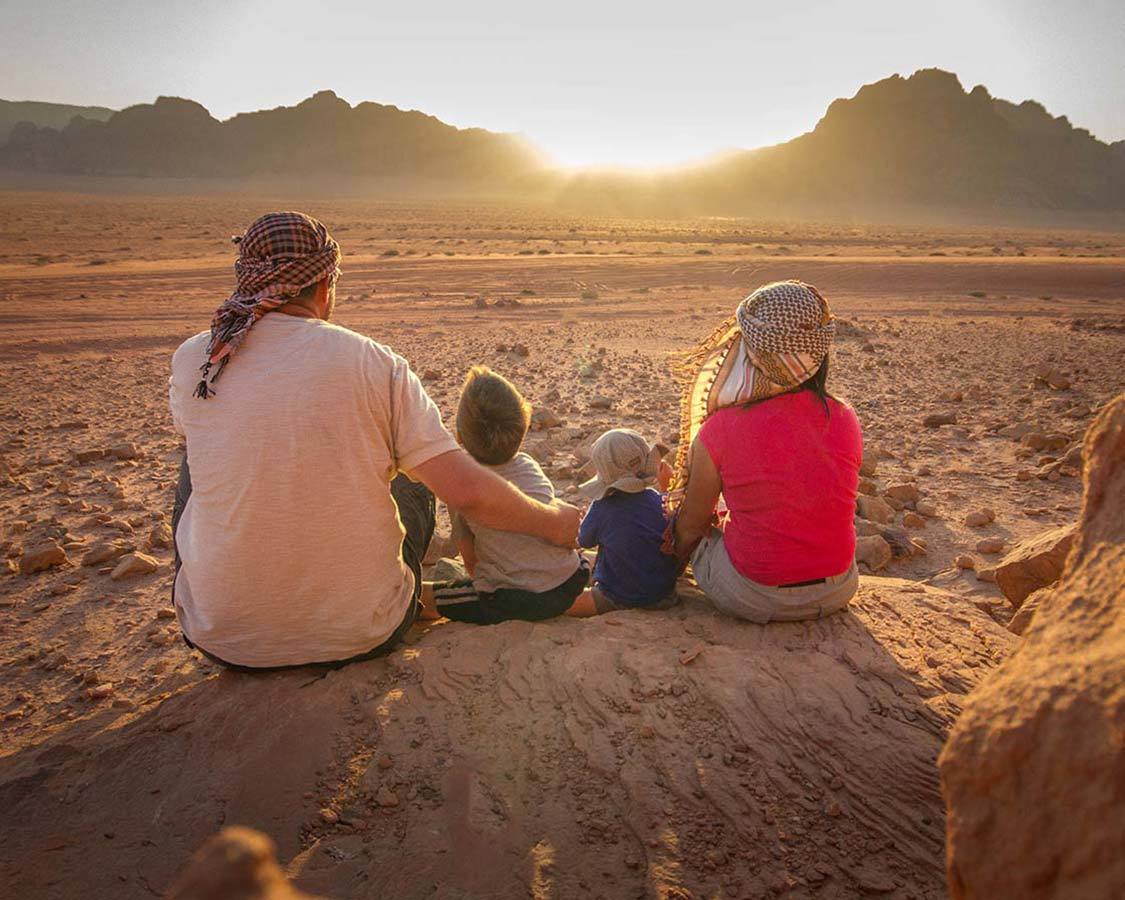
Tips For Booking Your Seat While Flying With A Baby
Choose Non-Stop Flights When Possible
Whenever possible, target non-stop flights. Limiting the boarding/de-boarding time as well as time spent organizing your family and packing/unpacking will significantly reduce the stress of your travel experience.
Pick The Aisle Seat
If you have the opportunity, choose an aisle seat. Children need to use the bathroom, a lot. Plus they like to get up and walk around the plane and introduce themselves to absolutely everyone on the flight. Choosing an aisle seat will help maintain your sanity as well as that of anyone who you’re seated with.
Ensure Your Family Is Seated Together While Flying
While this isn’t an issue with a lap-child, anytime a child is booked in their own seat many airlines have the option of separating a parent from their child during a flight. Personally, I think that this is a ridiculous policy.
Some airlines are working to amend these policies, but to avoid any unpleasant surprises, speak with the airline ahead of time. There may be additional fees involved to ensure that you are placed with your child during the flight.
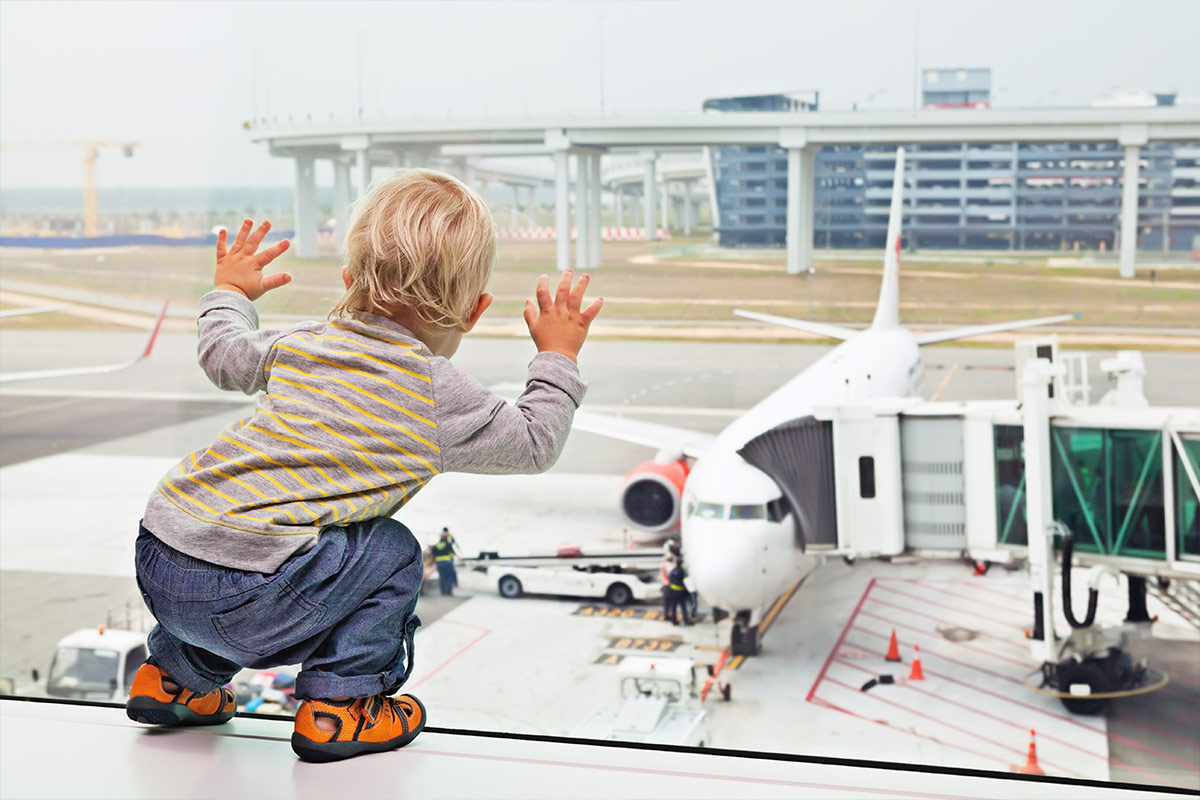
Going To And Through The Airport With A Baby
Before You Leave
Make sure you plan your route to the airport accordingly. Take into consideration traffic and construction delays and figure out if you are arriving by taxi, Uber, train, or car.
Most domestic (within your own country) flights require you to be at the airport at least an hour before your flight while international flights require at least three hours. When you’re traveling with children, it’s always good to leave yourself some extra time in case of delays checking in, or emergency diaper changes.
After checking in, always remember that airports can be busy places, so arriving early and getting a spot close to the counter and near a window can help you get settled and entertain the kids all at once. Make sure to pack a few toys or games that can be quickly packed up once the call-to-board occurs.
Going Through Security
Security is always a big what-if when traveling, and with children, it’s no different. Juggling your bags and your baby makes the process a little more complicated than going through it alone or with your partner. Make sure you have slip-on shoes and all your accessories, belts, change, and phone are packed away in your carry-on before you join the security line in order to help simplify the process.
Children below walking age are able to be carried through the scanners by their guardians. Once children are of walking age, they will usually need to go through themselves, either before or after their guardian. If your child is comfortable going ahead of you, a security agent will be waiting on the other side of the scanner to keep them from running off.
If you need to go ahead of your child, you can ask an agent to wait with your child so they can walk through to you on the other side.
Boarding Your Flight
Often, but not always, airlines give the option to those traveling with young children (generally considered those under the age of 5) to board early, just after those in the first-class/business-class seats.
While we generally opt to board at the earliest possible moment in order to secure much sought-after overhead bin space and get the children settled while there is relatively low traffic through the aisles, if you have an ‘energetic’ child, you may want to delay boarding as long as possible in order to give them a chance to burn off some energy before they are confined to a small area.
How To Plan Your Time On Board The Airplane
You’ve got your flights booked, you’ve checked in, made it through security, and boarded the airplane. This, for me, is where I consider the trip to have “officially” begun!
Here are a few tricks for making the best of your time in a flying canister.
Pre-Flight Speech
When you fly with children, there are a few things that the flight attendants will brief you on at the beginning of the flight. These usually include seatbelt/carrying instructions and tips on how to make the flight more comfortable for everyone on board.
Entertaining Your Baby While Flying
I’m a big proponent of “pack as little as possible.” Babies don’t require a lot to entertain them, and the more you pack, the more you have to track, lose, or break, along the way.
If you have a long flight, a few soft-cover storybooks are great to bring. small puppets are also a great way to bring some smiles to your little one as you cruise through the air.
Avoiding Ear Pain In Babies While Flying
Babies and younger children can often suffer from ear pain during flights due to their inability to make their ears pop during pressure changes. Having a bottle, soother, or breastfeeding your child during take-off and landing can help your child’s ears pop by inducing a sucking motion.
Don’t Expect Help From The Cabin Crew
We always travel with the motto “Hope for the best, but expect the worst”. Airlines are generally quite good at helping parents through the flying process, but anyone can have a bad day.
Rules are rarely in place to help the customer. Don’t be afraid to ask for help, but don’t be surprised if you don’t get it.
How To Change Your Baby’s Diaper While Flying
Most passenger airplanes have at least one bathroom on the flight with a fold-down change table on it. It’s snug in there without the changing table down, and it’s even cozier with two bodies and a changing table taking up space, but at least you have a flat spot to work with.
On longer flights, you will likely be asked to place any diapers into a supplied plastic bag to ensure a “less aromatic” atmosphere for everyone onboard.
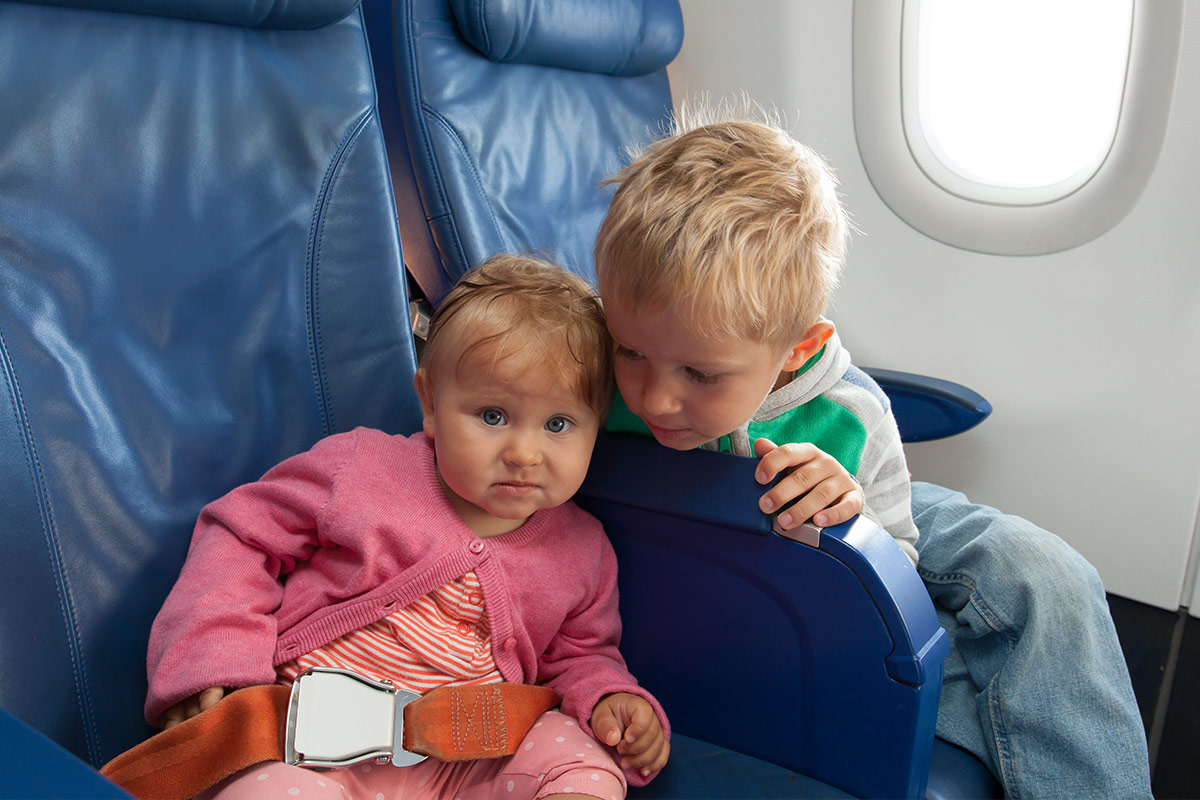
What To Pack When Flying With A Baby
When packing for your first family flight, here are a few things to consider. If you have purchased a separate ticket for your baby, they are usually entitled to their own baggage allowance. This would be in addition to the adult’s baggage allowance.
The first time you are flying with a baby, you’re going to overpack. I did it, and pretty much every other parent who has flown with a baby has too. You’ll want to take advantage of the extra baggage allowance.
You can find my current list of the top suitcase brands here and a current list of my favorite carry-on luggage here.
Documents Needed When Flying With A Baby
A valid passport issued to your baby is required when traveling. Rules and laws differ from country to country but having a passport covers all requirements needed when traveling. Most importantly, it is proof that your baby is allowed to enter back to your home country.
If you are a single parent traveling internationally with a baby you may require documentation as to your status with the children. This can be tricky, especially in the case of divorce. If you have full custody, a document stating so might be requested at customs. If you have shared custody or are traveling without your partner or spouse, you may be requested to show a notarized document indicating permission for the children to travel.
Diaper Bag
If you’re anything like me, you have a diaper bag with all of your baby essentials packed into it. Bring it with you. It’s familiar, organized in a way that you understand, and easily portable. Stick with what you know.
Stroller
Most airlines also allow you to bring a stroller through security and have it checked in right at the gate (often called a gate-check). If you choose this as an option of transporting your child through the airport, make sure you let the airline know at check-in so that they can give you the gate-check tag for your stroller.
A stroller is usually a complimentary check-in on most airlines. You can find my current list of the top lightweight travel strollers here.
Comfort items
If your child has an item that they can’t live without (in our case, D absolutely had to have his dot blanket with him to relax, and C always wanted his penguin puppet Meep Meep), then a flight is not the time to leave that at home.
Whether it’s a stuffy, a blanket, or a favorite book, make sure it’s available in your carry-on for when your child needs it.
Diapers and wipes
Don’t let what happened to me, happen to you.
During our 15-hour flight from Toronto to Jordan, D got hit with a bad case of the runs. We watched desperately as our once towering stack of diapers dwindled to naught. Finally, two hours before our flight landed in Amman, we were cleaned out and praying to the poop gods to give us a break.
For your flight, pack double the number of diapers you would expect. Prepare for delays, weather cancellations, and any other wrench that can be thrown at you.
Snacks
If you haven’t packed any food for the flight after check-in is also a great time to make any purchases of snacks or drinks for the flight. Airline food is rarely more than edible, so having some of your own munchies will help keep children’s hunger pangs away.
Liquids and Breast Milk
The standard for liquid allowance on a flight is that no item can contain more than 100 ml of liquid in your carry-on baggage. These numbers, however, change when you are flying with children. Parents are allowed to bring enough formula, breast milk, and juice to keep their child nourished during your flight.
There have been instances where parents have attempted to carry on significant amounts of these liquids, either from pumping while on business trips or carrying on enough milk or formula for the child’s entire week-long travel, and have been forced to dump the contents.
The rules around amounts vary by airline, so it is best to bring what you need for the flight, plus a little extra in case of delays. Breastfeeding before take-off and right after landing not only helps the baby feel calm and safe but also aids in packing just that little bit less in formula or breastmilk.
Other Things To Pack When Flying With A Baby
Don’t forget to pack an extra set of clothes and a couple of plastic bags in case of “accidents”. You can store the extra clothes in the plastic bag and then use it to store the soiled clothes until you have a chance to wash them.
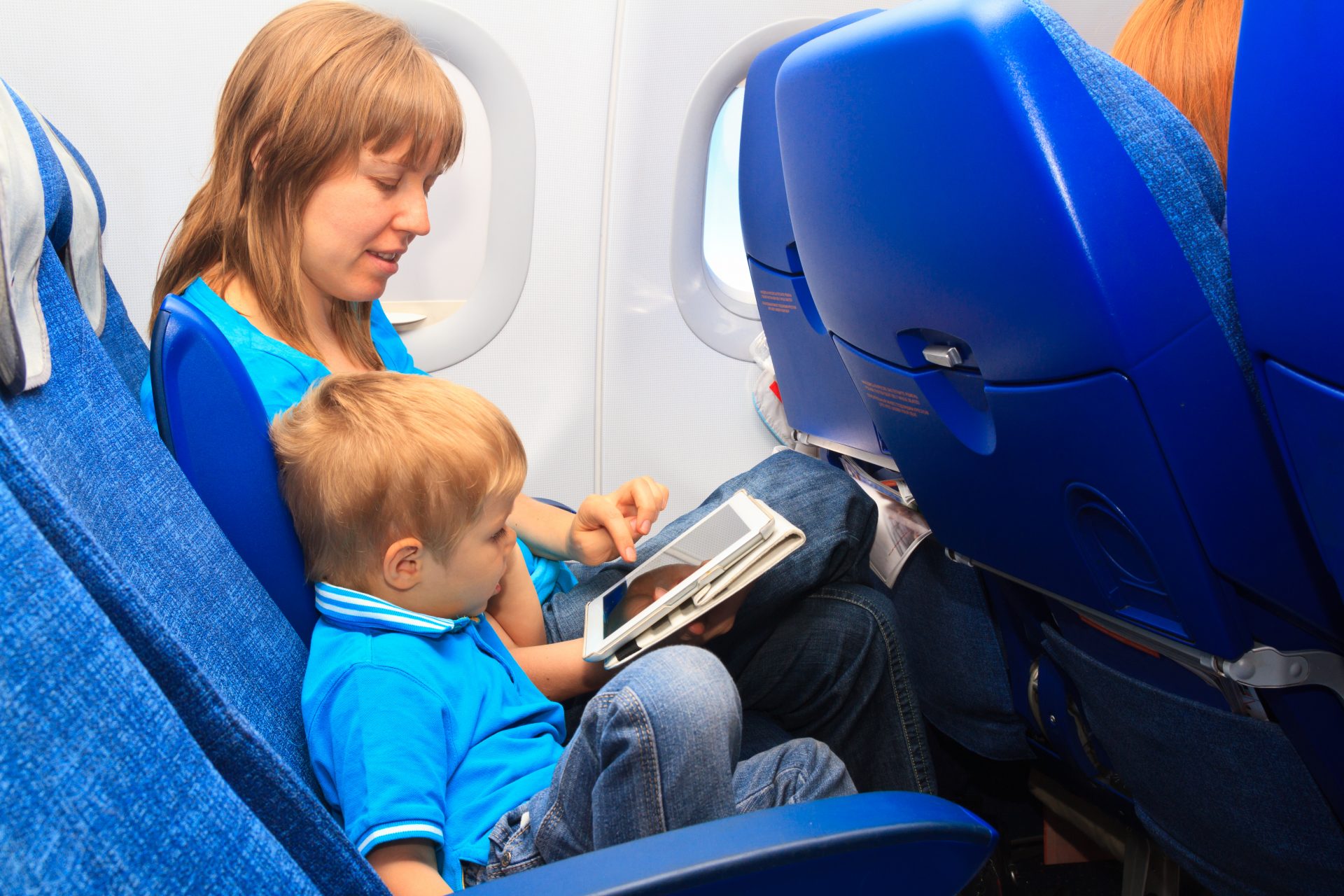
Now You’re Ready To Fly With A Baby!
Flying with a baby certainly offers its fair share of challenges, but if you plan ahead and give yourself lots of time, much of the pressure can be lessened.
Don’t burden yourself with the extra stress of worry, and plan ahead to allow you take each moment in stride. Your child may cry or scream, or maybe they won’t. Maybe another passenger gives you a look, or maybe they help you lift your bags when you’re struggling.
Either way, hope for the best, but expect the worse and focus on you, your baby and your upcoming adventure. Remember, you have as much right to be on that flight as everyone else. You paid for your ticket and your family deserves to be flying together.
If you want to join other families who are passionate about family travel, we welcome you to join our Family Travel Support Group on Facebook. This group is made up of families just like yours who have a passion to show their kids the world.
Wandering Wagars is a participant in the Amazon Services LLC Associates Program, an affiliate advertising program designed to provide a means for sites to earn advertising fees by advertising and linking to amazon.com, amazon.co.uk, amazon.ca. Amazon and the Amazon logo are trademarks of Amazon.com, Inc. or its affiliates.
You May Also Like To Read:
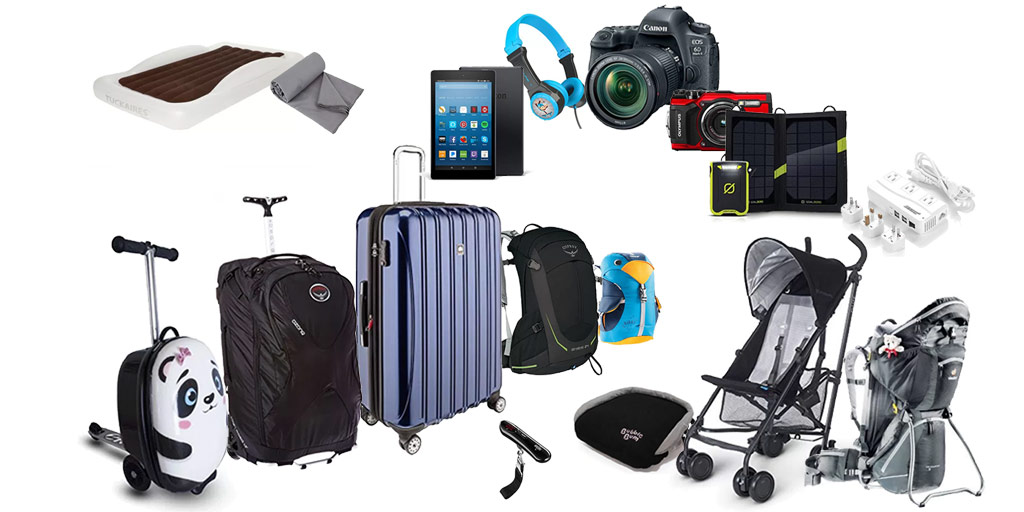
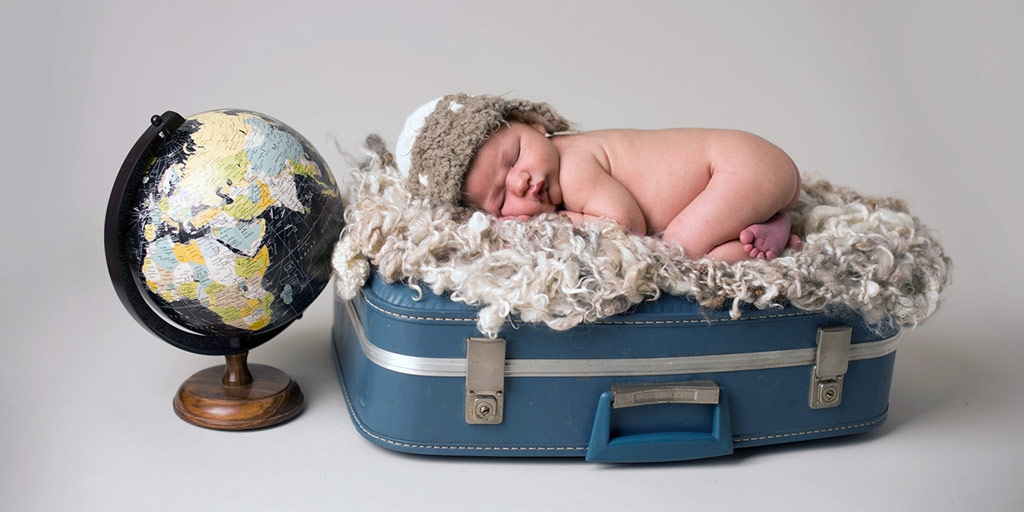
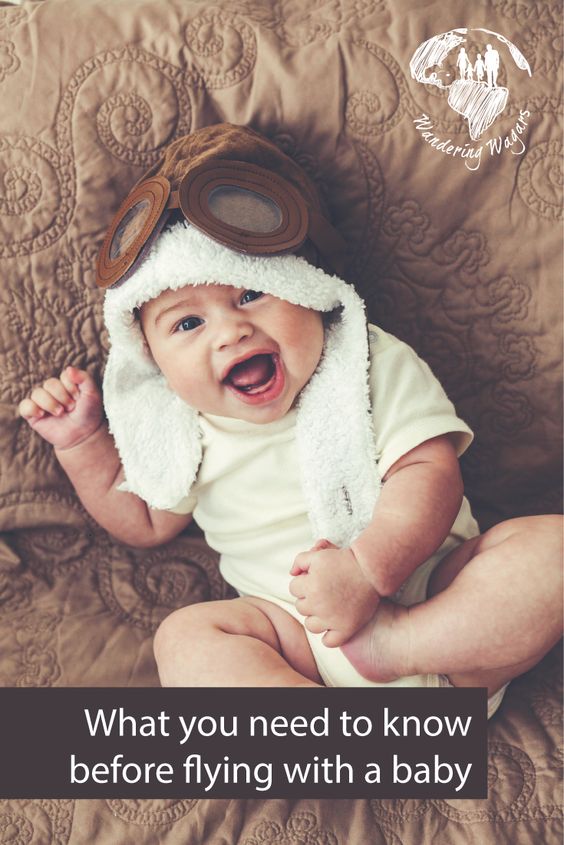
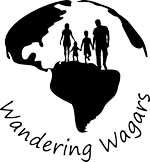

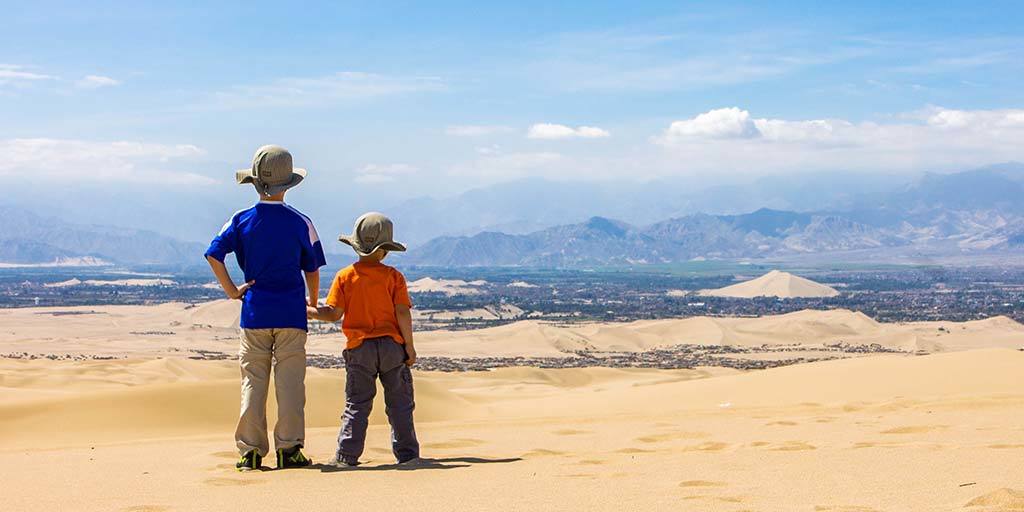
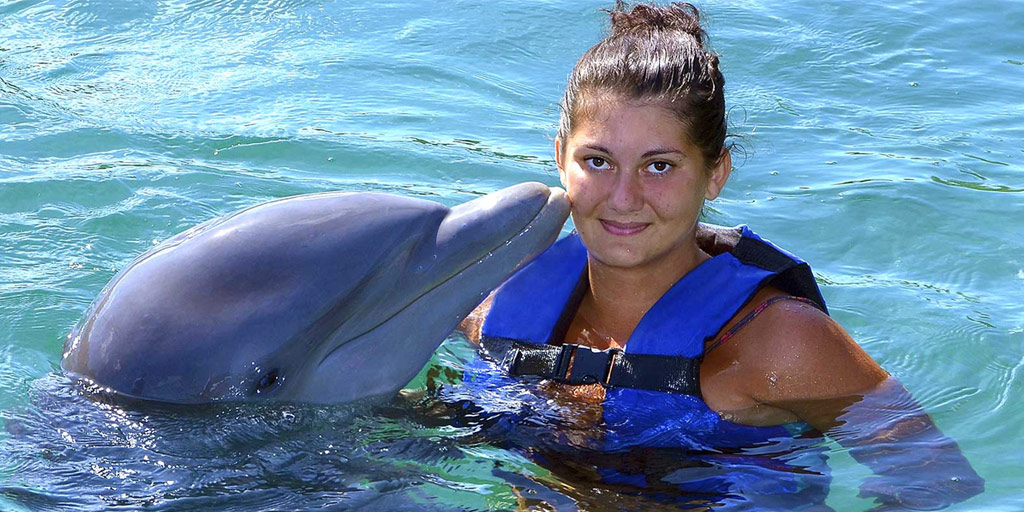
Charles Cates
Tuesday 6th of August 2019
Great tips! Thanks for sharing. I can say from experience..
Kevin Wagar
Tuesday 6th of August 2019
Happy to hear that! Keep on travelling :)
Jen A Reyneri
Sunday 18th of December 2016
Awesome tips! I love your site and connecting with other families out there to inspire others to GO ! Keep it up! :)
Christina Wagar
Sunday 18th of December 2016
Thanks Jen!
verushka
Wednesday 24th of August 2016
such an informative post ! Very valuable tips. There is so much to consider and pack when travelling with lil ones.
Sarah from Tales From a Fork
Thursday 14th of July 2016
This is such a comprehensive list! Will send it to my sister who's flying with her baby.
cathy
Thursday 23rd of June 2016
Are they your kids? They look so adorable! :)))) I love kids and being a traveler in this single life, I am also dreaming of traveling with my future kids. When I was in Bangkok, I saw a couple with a big backpack with their babies on their back! It's the loveliest thing I've ever seen! Keeping these guides and advice you wrote as it's very helpful in my future needs. ha ha
Kevin Wagar
Friday 24th of June 2016
Hi Cathy, These one's aren't ours, but most of the rest of our posts include photos of our little guys. Kid Carriers (Backpacks to carry your children) are a fantastic way of bringing them around in comfort. We used one for our kids and they loved it!